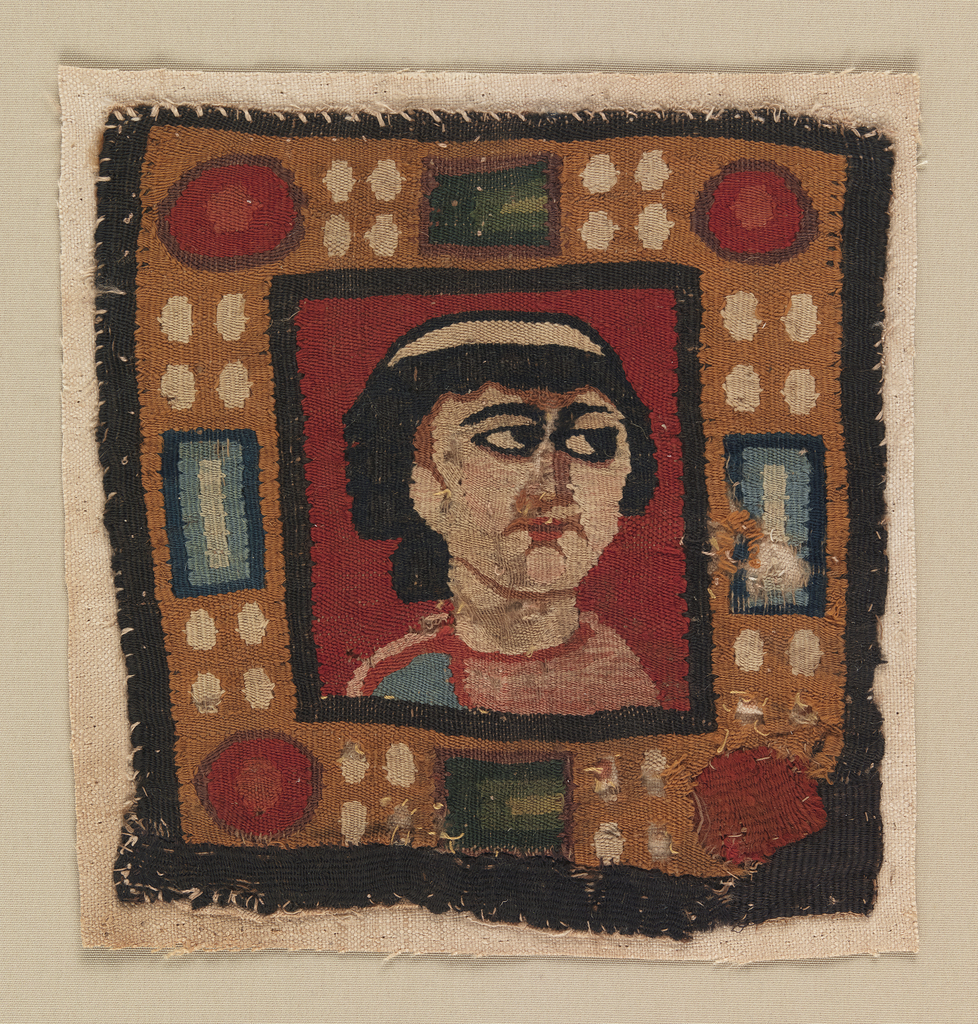Woven portrait busts were a popular way to decorate clothing and soft furnishings in late Roman (third-fourth century C.E.) and Byzantine (fourth-seventh century C.E.) Egypt. Records show that woven busts could sometimes portray real people. For example, the Emperor Gratian (d. 383 C.E.) sent the Consul Ausonius a tunic inwoven with a portrait of Constantius.[1] ...
